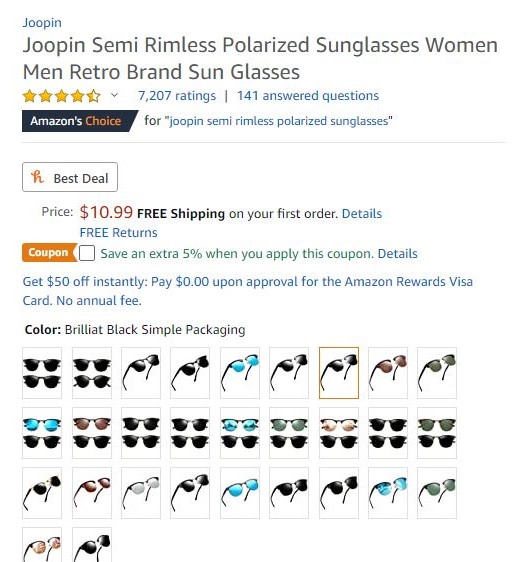If you toss and turn at night worrying about how to boost sales and increase product visibility, welcome to the club. You’re probably hyper-focused on marketing strategy and savvy advertising. Rightfully so.
But what if you’ve been overlooking a way to maximize your online exposure all along?
We’re talking about product data feeds—or more specifically, product data feeds optimized for the marketing channels you use.
These little morsels of data can seriously impact the success of your ecommerce campaigns. Yet, too many retailers and marketers overlook their importance.
What Is a Product Data Feed?

A product data feed (also called a shopping feed or product feed) is a CSV, TXT or XML file that contains information about your products.
If you sell women’s jeans online, for example, your product feed will contain things like the product SKU, a description (e.g., dark wash, high rise, boot cut), product images, pricing, color, size, etc.
More complex product data feeds might include things like marketing copy, search engine marketing content, product ratings, currency, and bestseller information.
Lots of marketing channels—from Google to Amazon to eBay—use product feeds, and each channel has its own specific data requirements. Which means you have the time-consuming task of configuring your product feeds to meet each channel’s standards.
This might not be a huge issue if you have a small catalog that’s relatively static. But if you hawk a lot of merch, you’ve got a bigger project on your hands. This is where it pays to hire an expert in ecommerce channel management to help you manage your feeds.
How Do You Create Product Feeds?
You generally have three options. You can create product feeds manually, get them from your store using content API, or use an automation tool or data feed platform.
Manual product feeds
Creating product feeds manually is just like it sounds.
You enter the data manually into a spreadsheet—whether it’s Google Sheets or Excel—based on the marketing channel’s required specifications. With manual product feeds you must re-upload the file to each channel every time you make a change. For ecommerce retailers with small and stable product catalogs, this usually isn’t a big issue.
Content API product feeds
If you’re a new seller just getting familiar with selling on marketing channels, content API product feeds can be helpful (odds are you have enough things to worry about beyond optimizing your product feeds). It’s a quick way to connect to channels, but it requires a direct connection between your web store host and the marketing channel. Also, this option doesn’t allow you to customize or optimize your feeds—it pulls the data as is from your online store.
Ecommerce product feed platform
For retailers with large catalogs, updating product feeds manually to meet the specs of each channel could literally be a full-time job. This is where using a multi-channel product feed platform makes sense. These tools can be a huge help if you have a large product catalog, sell products on multiple channels, or have a catalog that frequently changes or fluctuates.
Why Use Product Feeds?

First, most marketing channels require them. We know, it’s just one more thing to manage on your ever-growing lists of tasks. But creating optimized product feeds is well worth the effort. Shopping channels and marketplaces use this data to indicate the quality of your campaign and that your products can be found. If the data you provide is thin or leaves out vital information, the channel might not show your product for a particular search query.
Make sure your product feeds are up to date and optimized. It will earn you better quality scores, provide better product exposure, and give shoppers a better experience. It might also prevent you from getting unexpectedly booted off an ecommerce shopping platform for having sub-par data.
3 Ways to Optimize Your Product Feeds
Here are a few best practices for managing your product feeds.
1: Update them regularly, even daily.

If an item at a brick-and-mortar store had a product label with inaccurate or non-sensical information, odds are you’d put the item back on the shelf. So why would you expect any different from your online shoppers? Missing or inaccurate information and broken links (especially on Google and Amazon) in your product data feeds can only hurt you in the long run. Worse, if it keeps happening you could get lower rankings or even booted off the channel.
Update your product feed data regularly to reflect all changes in your store and inventory. If you have a large catalog, consider using a product feed automation platform to do it efficiently.
2: Include both required and recommended/optional fields.
 Required fields vary from channel to channel, but the more information you provide the better. For example, Google requires ID, Title, Description, Image Link, Price, Brand, GTIN, MPN (if no GTIN), Condition, Color, Gender, Material, Pattern, Size, Shipping, Tax, and several other data points.
Required fields vary from channel to channel, but the more information you provide the better. For example, Google requires ID, Title, Description, Image Link, Price, Brand, GTIN, MPN (if no GTIN), Condition, Color, Gender, Material, Pattern, Size, Shipping, Tax, and several other data points.
But you shouldn’t stop at what’s required. Providing optional information will give the channel’s algorithm more reason to put your product in front of eyeballs.
Give your shoppers as much useful data as possible—things like the Availability Date (if your item is available for preorder), Additional Images, Sale Price (if you’re offering your item at a discount), Mobile Link (to your product’s mobile-optimized landing page), Product Type (for example, Home > Women > Dresses > Maxi Dresses, instead of just Dresses), etc.
3: Optimize your product descriptions and titles for SEO.

It’s one thing to create feeds with accurate information. But to really grab people’s attention your descriptions and titles must be compelling. Take the time to write killer product descriptions and titles (or solicit the help of a digital marketing agency), and always include high-quality images. Some platforms let you get more creative than others with promotional messages, dynamic images, and customer ratings. Take advantage of these opportunities.
There you have it. Well-developed product data feeds can help you get your products in front of the right people—and maybe even scale up your ecommerce campaigns.
Need Help Managing Your Feeds?
The experts at National Positions are at your service. Our performance marketing analysts specialize in ecommerce product feed management.
We’ll optimize and manage your product data feeds to align your online store with all the major shopping engines and marketplaces. And we’ll ensure your product data feeds are well structured, organized, and perfectly aligned with your paid ad campaigns—so you’re driving quality traffic to your most important categories and products.
Ready to supercharge your ecommerce campaigns? Call us today at (818) 918-5188 or drop us a line.